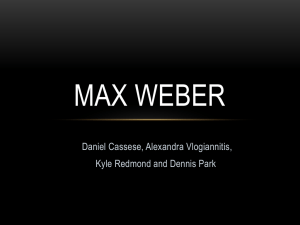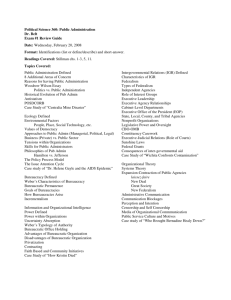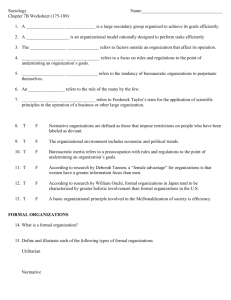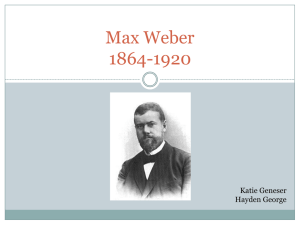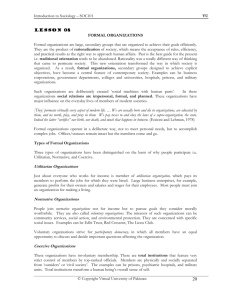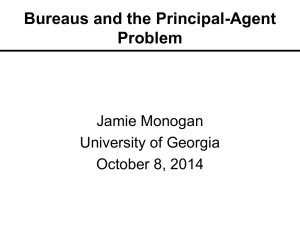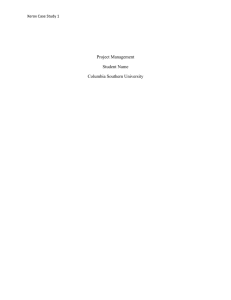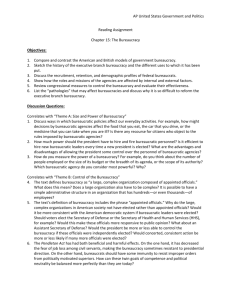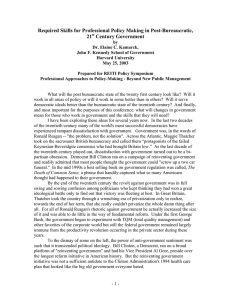Organizational chart
advertisement
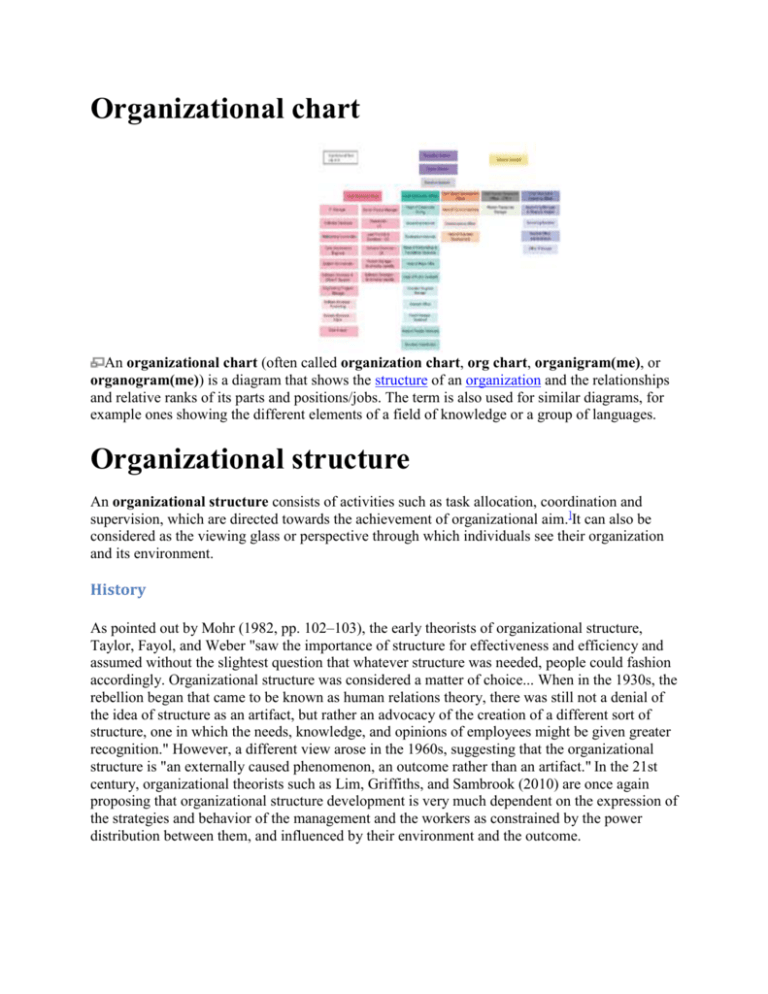
Organizational chart An organizational chart (often called organization chart, org chart, organigram(me), or organogram(me)) is a diagram that shows the structure of an organization and the relationships and relative ranks of its parts and positions/jobs. The term is also used for similar diagrams, for example ones showing the different elements of a field of knowledge or a group of languages. Organizational structure An organizational structure consists of activities such as task allocation, coordination and supervision, which are directed towards the achievement of organizational aim.]It can also be considered as the viewing glass or perspective through which individuals see their organization and its environment. History As pointed out by Mohr (1982, pp. 102–103), the early theorists of organizational structure, Taylor, Fayol, and Weber "saw the importance of structure for effectiveness and efficiency and assumed without the slightest question that whatever structure was needed, people could fashion accordingly. Organizational structure was considered a matter of choice... When in the 1930s, the rebellion began that came to be known as human relations theory, there was still not a denial of the idea of structure as an artifact, but rather an advocacy of the creation of a different sort of structure, one in which the needs, knowledge, and opinions of employees might be given greater recognition." However, a different view arose in the 1960s, suggesting that the organizational structure is "an externally caused phenomenon, an outcome rather than an artifact." In the 21st century, organizational theorists such as Lim, Griffiths, and Sambrook (2010) are once again proposing that organizational structure development is very much dependent on the expression of the strategies and behavior of the management and the workers as constrained by the power distribution between them, and influenced by their environment and the outcome. ] Pre-bureaucratic structures Pre-bureaucratic (entrepreneurial) structures lack standardization of tasks. This structure is most common in smaller organizations and is best used to solve simple tasks. The structure is totally centralized. The strategic leader makes all key decisions and most communication is done by one on one conversations. It is particularly useful for new (entrepreneurial) business as it enables the founder to control growth and development. Bureaucratic structures Weber (1948, p. 214) gives the analogy that “the fully developed bureaucratic mechanism compares with other organizations exactly as does the machine compare with the nonmechanical modes of production. Precision, speed, unambiguity, … strict subordination, reduction of friction and of material and personal costs- these are raised to the optimum point in the strictly bureaucratic administration.” Bureaucratic structures have a certain degree of standardization. They are better suited for more complex or larger scale organizations, usually adopting a tall structure. The tension between bureaucratic structures and non-bureaucratic is echoed in Burns and Stalker's distinction between mechanistic and organic structures. The Weberian characteristics of bureaucracy are: Clear defined roles and responsibilities A hierarchical structure Respect for merit. Post-bureaucratic The term of post bureaucratic is used in two senses in the organizational literature: one generic and one much more specific.In the generic sense the term post bureaucratic is often used to describe a range of ideas developed since the 1980s that specifically contrast themselves with Weber's ideal type bureaucracy. This may include total quality management, culture management and matrix management, amongst others. None of these however has left behind the core tenets of Bureaucracy. Hierarchies still exist, authority is still Weber's rational, legal type, and the organization is still rule bound. Heckscher, arguing along these lines, describes them as cleaned up bureaucracies,rather than a fundamental shift away from bureaucracy. Gideon Kunda, in his classic study of culture management at 'Tech' argued that 'the essence of bureaucratic control - the formalisation, codification and enforcement of rules and regulations - does not change in principle.....it shifts focus from organizational structure to the organization's culture'. Another smaller group of theorists have developed the theory of the Post-Bureaucratic Organization.,provide a detailed discussion which attempts to describe an organization that is fundamentally not bureaucratic. Charles Heckscher has developed an ideal type, the postbureaucratic organization, in which decisions are based on dialogue and consensus rather than authority and command, the organization is a network rather than a hierarchy, open at the boundaries (in direct contrast to culture management); there is an emphasis on meta-decision making rules rather than decision making rules. This sort of horizontal decision making by consensus model is often used in housing cooperatives, other cooperatives and when running a non-profit or community organization. It is used in order to encourage participation and help to empower people who normally experience oppression in groups. Still other theorists are developing a resurgence of interest in complexity theory and organizations, and have focused on how simple structures can be used to engender organizational adaptations. For instance, Miner et al. (2000) studied how simple structures could be used to generate improvisational outcomes in product development. Their study makes links to simple structures and improviser learning. Other scholars such as Jan Rivkin and Sigglekow, and Nelson Repenning revive an older interest in how structure and strategy relate in dynamic environments. Functional structure Employees within the functional divisions of an organization tend to perform a specialized set of tasks, for instance the engineering department would be staffed only with software engineers. This leads to operational efficiencies within that group. However it could also lead to a lack of communication between the functional groups within an organization, making the organization slow and inflexible. As a whole, a functional organization is best suited as a producer of standardized goods and services at large volume and low cost. Coordination and specialization of tasks are centralized in a functional structure, which makes producing a limited amount of products or services efficient and predictable. Moreover, efficiencies can further be realized as functional organizations integrate their activities vertically so that products are sold and distributed quickly and at low cost.For instance, a small business could make components used in production of its products instead of buying them. This benefits the organization and employees faiths. Divisional structure Also called a "product structure", the divisional structure groups each organizational function into a division. Each division within a divisional structure contains all the necessary resources and functions within it. Divisions can be categorized from different points of view. One might make distinctions on a geographical basis (a US division and an EU division, for example) or on product/service basis (different products for different customers: households or companies). In another example, an automobile company with a divisional structure might have one division for SUVs, another division for subcompact cars, and another division for sedans. Each division may have its own sales, engineering and marketing departments. Matrix structure The matrix structure groups employees by both function and product. This structure can combine the best of both separate structures. A matrix organization frequently uses teams of employees to accomplish work, in order to take advantage of the strengths, as well as make up for the weaknesses, of functional and decentralized forms.
